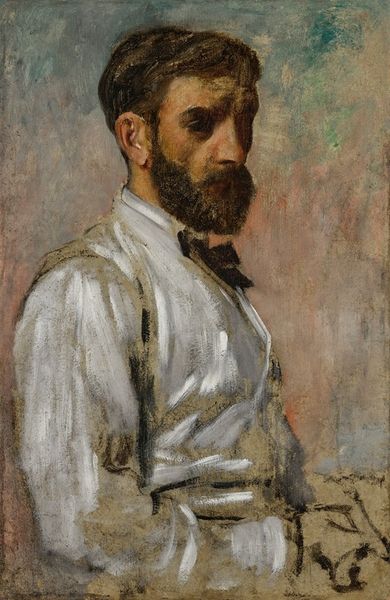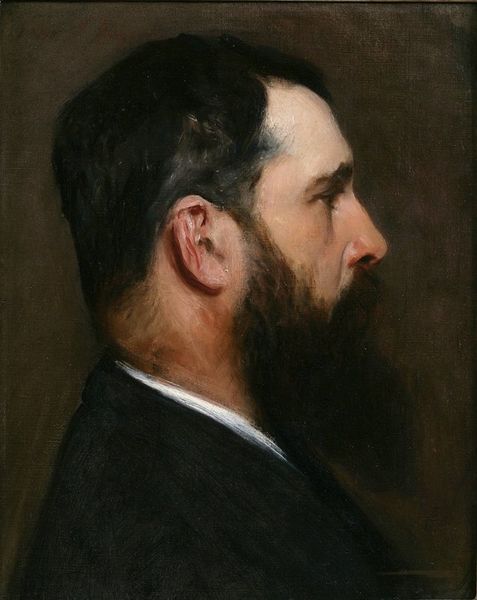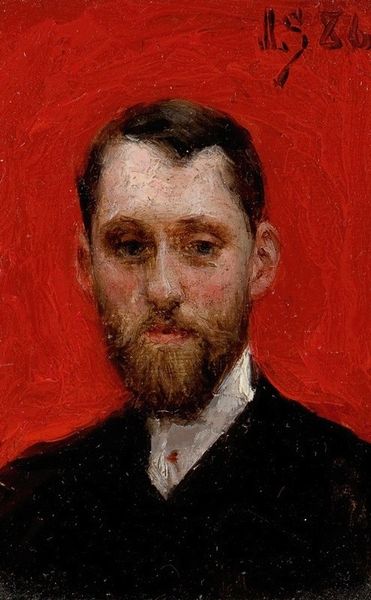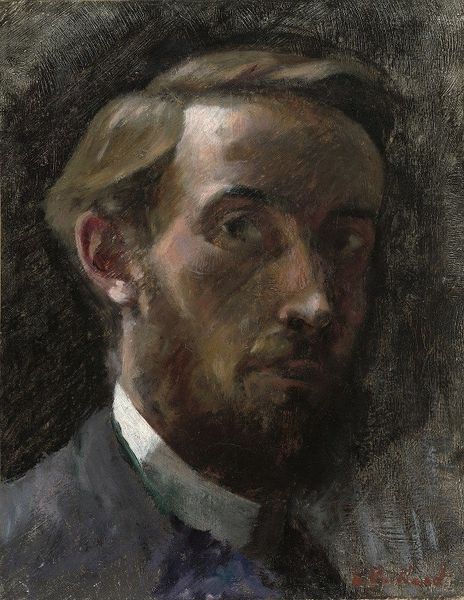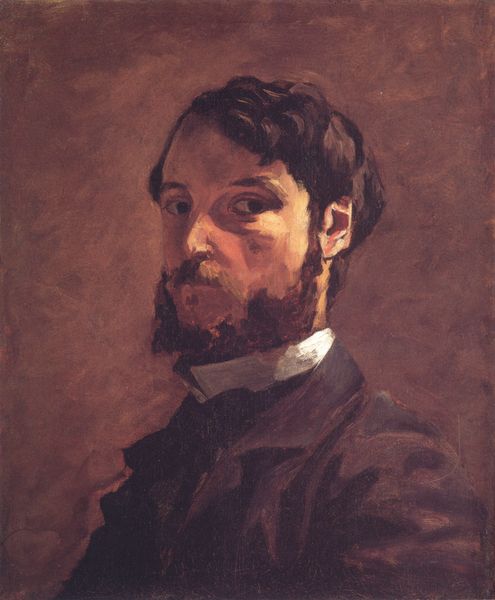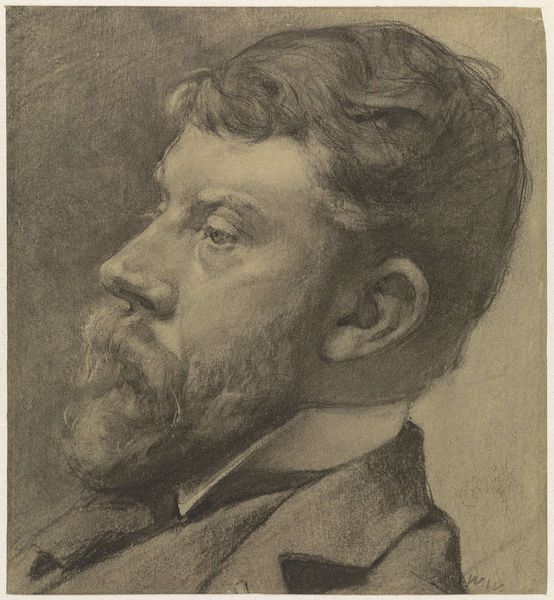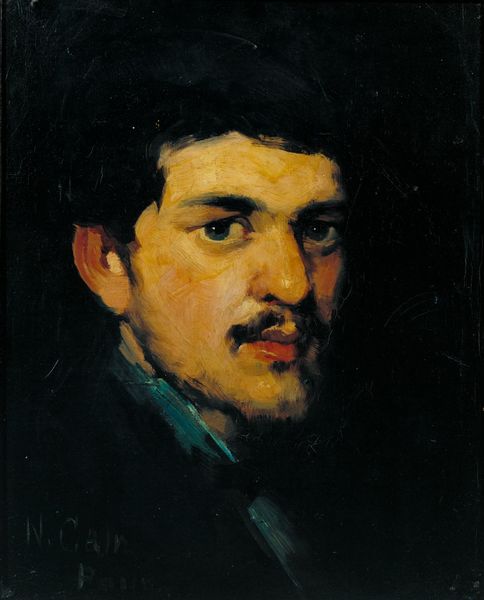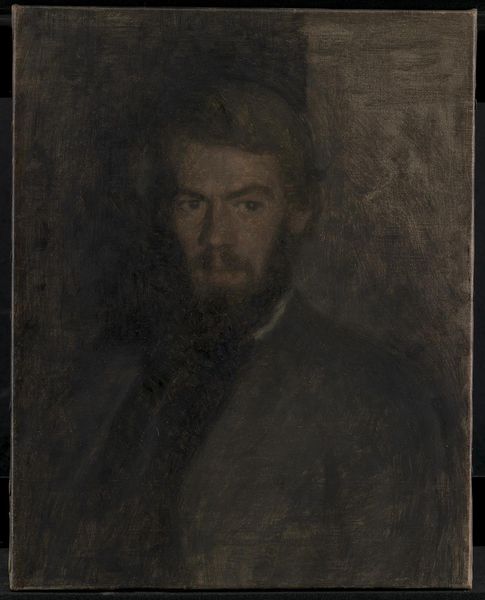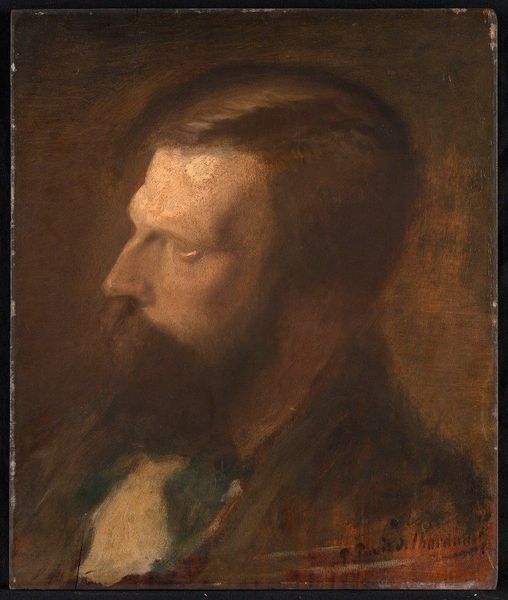
Copyright: Public Domain: Artvee
Curator: Here we have Ladislav Mednyánszky’s "Study of a Bearded Man in a Black Suit," likely painted between 1880 and 1900. Editor: My initial thought? Somber. The subdued palette and the subject's gaze convey a real sense of gravity. Curator: It's fascinating how Mednyánszky employed oil paint here. Note the visible brushstrokes, how he builds form not just with color, but also with texture. The way the black of his suit absorbs almost all the light emphasizes the materials—wool or perhaps velvet—and their availability to someone of this station. Editor: Exactly. This portrait operates within a very specific social framework. We see a man presented through a formal artistic convention, but stripped down almost, void of any distinct markers of belonging within a professional setting or his own narrative—that tension between individuality and societal expectation of late 19th-century portraiture. How did this particular work contribute to the landscape? Was it commissioned, a study, or something else entirely? Curator: That's key. This appears to be a study, yes, a preparation possibly. Looking closely, you can almost trace his process, his layering of paint, the blending of tones… This reveals more than just skill. It exposes the labour involved in creating the image, contrasting the labour implied in the portrayal of someone from higher circles who had money enough for the creation of portraits and studies thereof. Editor: I wonder, what sort of political or cultural statements—conscious or unconscious—were embedded in Mednyánszky's work through the public presentation of a figure like this in a "realistic" setting? Where might it have hung, and who would have been the audiences interacting with this type of presentation and its subtle communication? Curator: Yes, let’s consider who exactly purchased and valued a work like this…what power structures did it either reinforce or subvert, or whose gazes influenced what and how Mednyánszky was depicting—I do think it is the question that allows the viewer to go deeper than surface, when appreciating the image. Editor: Food for thought, indeed. I am left pondering what this artwork reflects both about Mednyánszky's world and, intriguingly, our own. Curator: Agreed. By looking closer at both form and cultural meaning, we move closer to a deep understanding that’s also much broader.
Comments
No comments
Be the first to comment and join the conversation on the ultimate creative platform.

